| Homepage | Timeline | Maps | A-Z index | Learning |
Grapes (Vitis Vinifera)
The grape vine is a tree climber with lobed leaves and small clustered green flowers. The fruit is a berry, fleshy and ovoid, up to 2.5 cm wide; dark purple, red, yellow or green in colour. It varies in taste from sour to sweet. There is glucose and fructose in the grapes, providing the basis for the alcohol content. Grapes are not only used for wine making, but can also be eaten fresh or dried as raisins. Raisins are an important food because they store well over a longer time.
Wild grapes were found at many early Near Eastern sites, demonstrating their importance long before domestication. Wild grapes are smaller than domesticated ones, but are also suitable for wine making. The earliest indications of grape cultivation date to about the Palestine Chalcolithic period and the Early Bronze Age. Finds of grapes in Egypt belong most likely to the domesticated type, since Egypt lies outside the region of the wild grape.
|
Bunches of grapes are very popular motifs in the art of the New Kingdom
(about 1550-1069 BC). |
||||
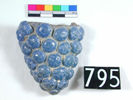 |
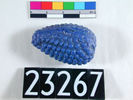 |
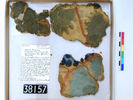 |
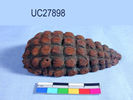 |
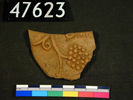 |
Murray/Boulton/Heron 2000: 580-582